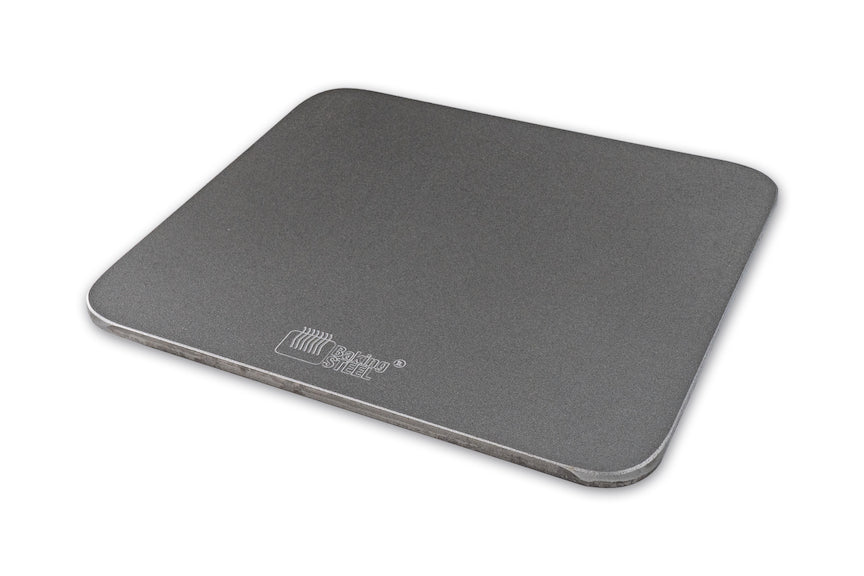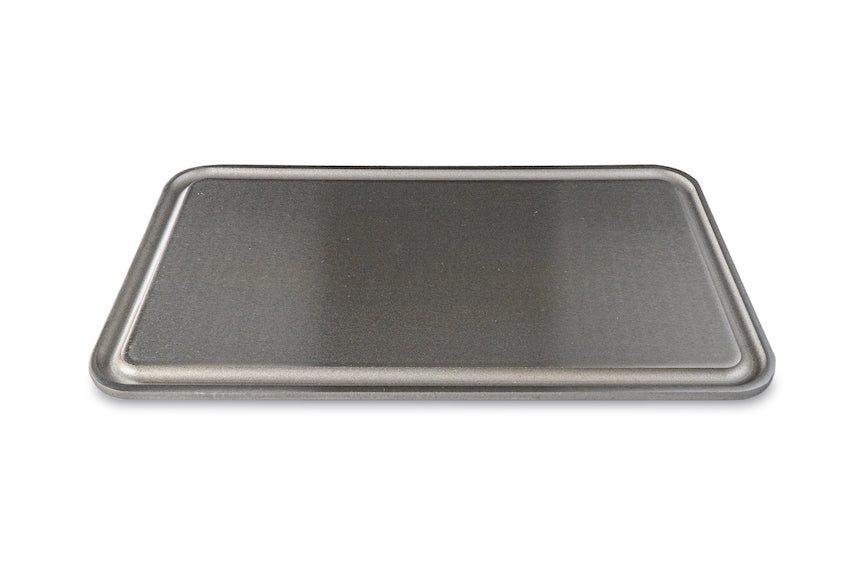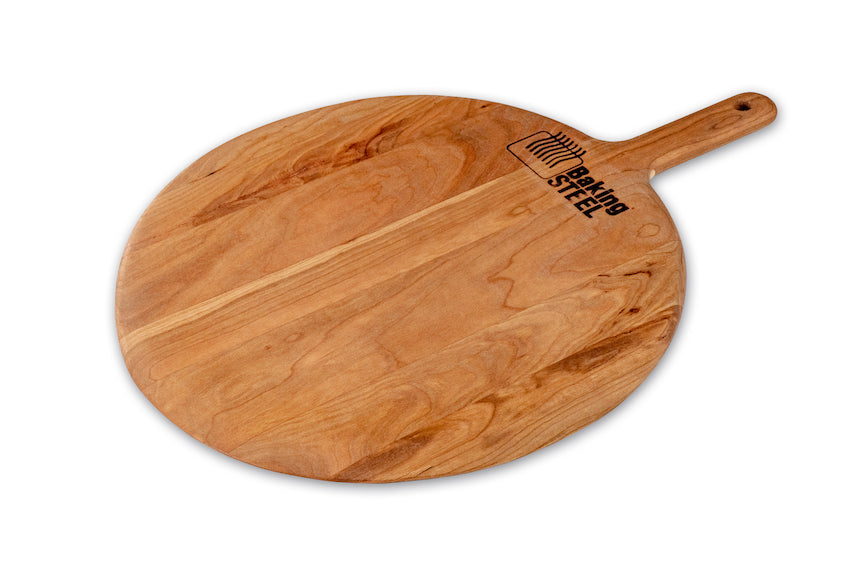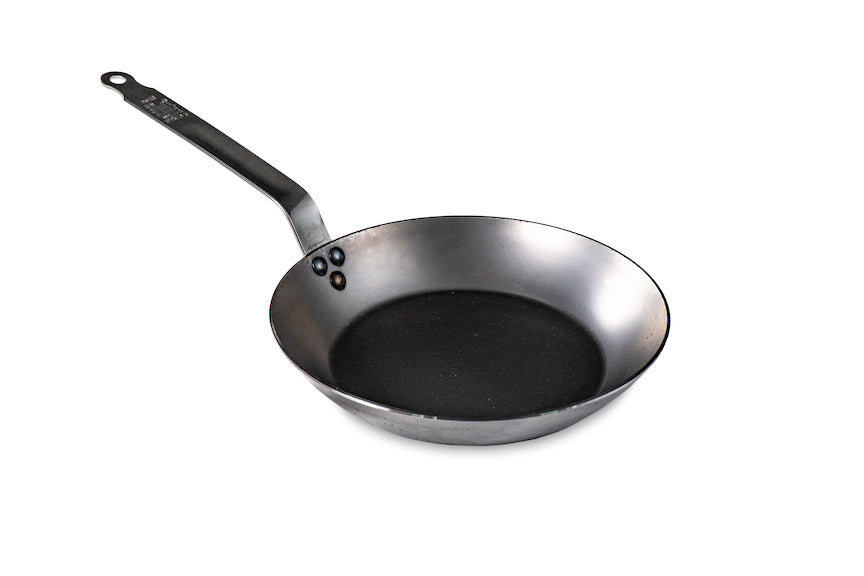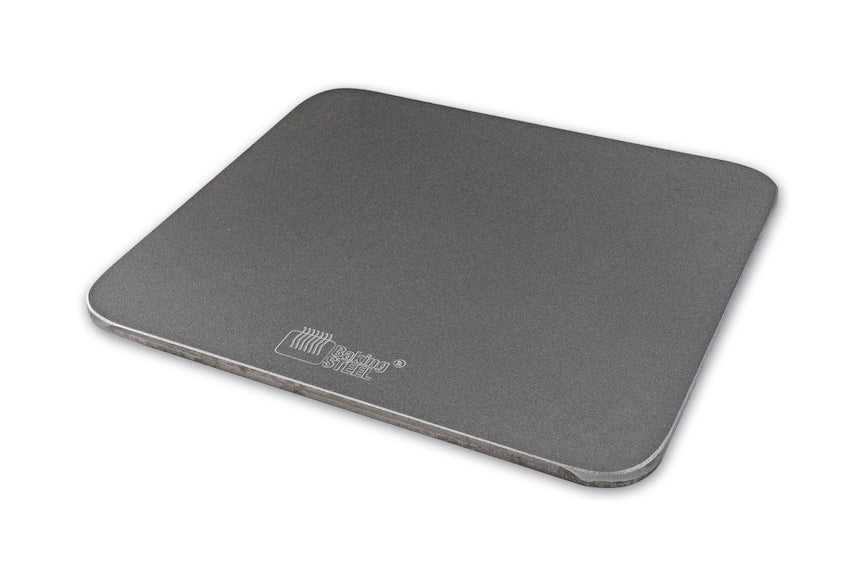The Science Behind The Ultra-Conductive Baking Steel Original

You'd be hard-pressed to find anyone that doesn't crave a perfectly thin and beautifully crisp pizza crust. Thanks to the ultra-conductive Baking Steel, gone are the days when you had to visit a restaurant to find that delicious pizza—now, you can make your own at home! But how does the Steel do it? And why is it so much better than any other home pizza-cooking method? Well, it all comes down to science behind the Baking Steel.
When it comes to defining a genuine Neapolitan-style pizza, the Associazione Verace Pizza Napoletana presents a thorough set of rules and regulations. According to this association, the dough must be made, mixed, and formed in a certain way, and the ingredients must include a set of specific toppings—all guidelines you could easily follow in your own personal kitchen. But the one part of the process that you couldn't recreate at home is the fact that the pizza itself must be cooked in a stone oven at around 900°F for 60-90 seconds. Home ovens just can't get that hot—most max out at around 500-550°F. It isn't just for definition's sake that a Neapolitan pizza needs to be cooked at an extremely high temperature for a short amount of time—it's actually very important for the finished product. That high temperature (resulting in such a quick cook time) gives the pizza that beautiful, crispy crust we all crave. But, what if you wanted to try to recreate that pizza at home? If you wanted your cook time to be just as fast, but you couldn't get the temperature as high as you need in your home oven, what could you do?

If you want to skip the reading part and just buy the ultra-conductive Baking Steel Original
Thermal Conductivity
The answer? Move heat as fast as you can by using a good conductor of heat. That's where the Baking Steel comes in. As you could probably guess, the Baking Steel is made purely of steel, which has high thermal conductivity. That's just a fancy way of saying that heat moves very quickly from steel's surface to whatever it's touching. Compared to ceramic (which is what the traditional pizza stone is made out of), steel's thermal conductivity is actually 18 times greater! So, you can imagine how much hotter the Baking Steel would get than your average pizza stone. Think of it this way: if you were to walk on ceramic bricks after they'd been sitting outside on a hot day, you wouldn't burn your feet. The heat transfer between the ceramic material and your feet would be pretty slow. (Slow enough that it wouldn't hurt, anyway.) However, if you tried doing the same thing with steel, you'd probably end up with some pretty severe burns—the heat would move much faster from the surface of the steel to your foot. (In other words, don't try this at home.) Basically, steel creates an environment that's hotter than it actually is. Which is exactly what you need to create that perfect pizza crust!
Thermal Mass
Steel isn't just a great conductor of heat—it also absorbs and retains heat well. In scientific terms, the Baking Steel has a "high thermal mass." If you wanted to maintain a hot environment, one way of doing it would be to heat up something heavy. That would ensure that the area stayed hot even if its surrounding temperatures became inconsistent. You can probably guess how this concept applies to the Baking Steel. When you're cooking pizzas one after another, you lose heat as you open and close the oven door. When that hot air escapes, it affects the temperature of your oven, which in turn, affects the cook time of your pizza. The Baking Steel solves this problem because steel is extremely dense—it holds in its heat, which means you don't have to worry about fluctuating oven temperatures.
Pure Facts
Aside from the fact that the Baking Steel is great with heat, it has some other practical advantages. Anything made of ceramic material will eventually shatter or crack if it's used for long enough. That means that those traditional pizza stones definitely won't last you a lifetime. Even professional pizza ovens that have six-inch-thick ceramic floors suffer from cracks. (If that ceramic can't even stand the heat, your pizza stone at home definitely won't!) Pizza stones also have a great risk of heat shock—if you were to splash cold water on a hot stone, there's a really good chance that it would shatter immediately. The Baking Steel, on the other hand, is going to last. It's extremely durable (you'd have quite a time trying to break it), plus, it has the added benefit of not having to worry about any kind of heat shock. From a purely factual standpoint, it will last longer than other at-home pizza-cooking tools.
Craving That Scientifically-Proven Crust?
When it comes to creating that perfect crust at home, the Baking Steel wins—no questions asked. After all, it was created with some pretty precise scientific specifications in mind. (And you can't argue with the facts!) But enough about science… we know after reading all this, you're probably just ready for some of that mouthwatering pizza. So, go create some love on the Steel!



